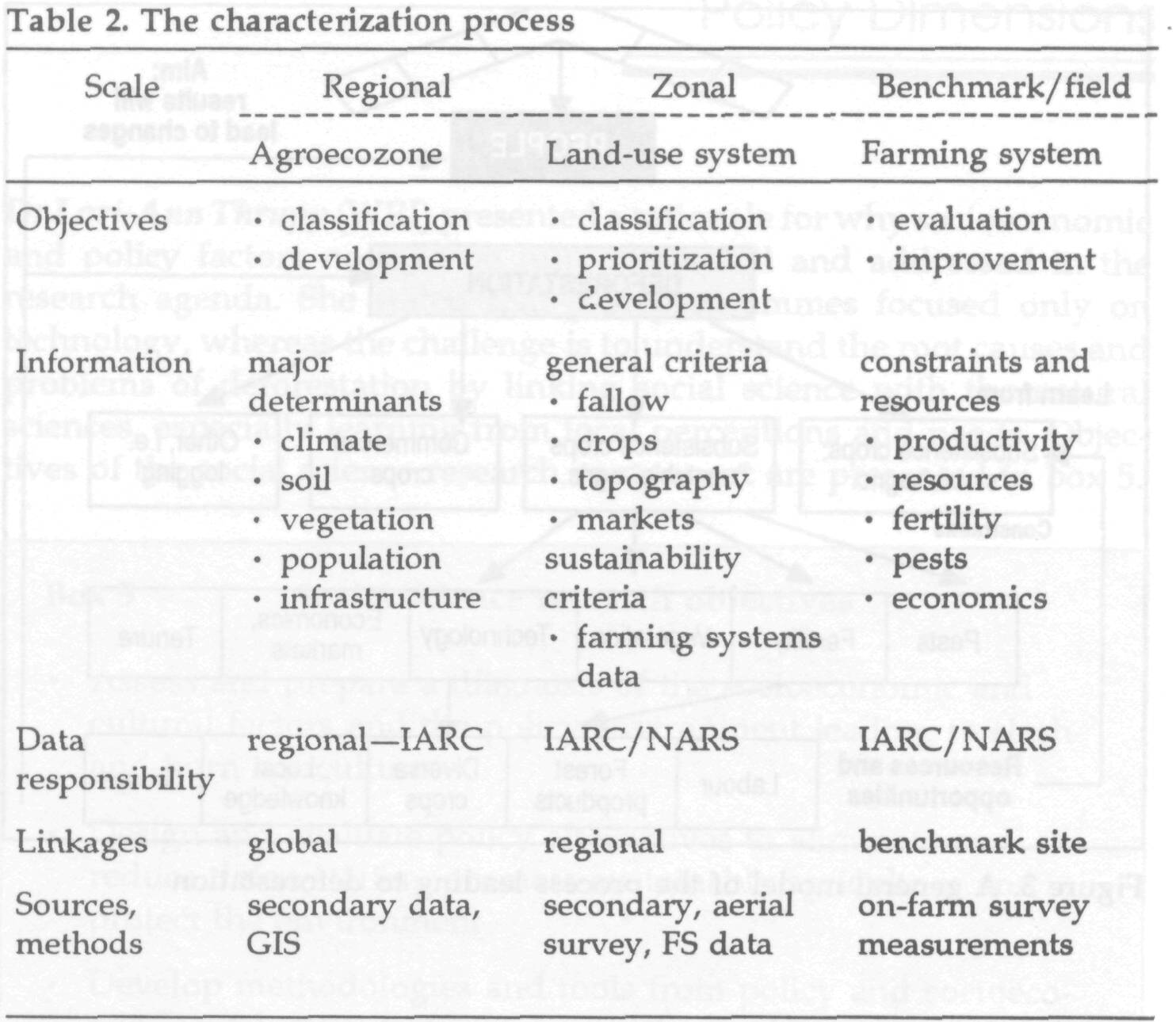
An e-publication by the World Agroforestry Centre
ALTERNATIVES TO SLASH-AND-BURN: a global initiative

 |
An e-publication by the World Agroforestry Centre |
|
ALTERNATIVES TO SLASH-AND-BURN: a global initiative |
|
|
The Characterization Process Dr Mike Swift (TSBF) gave a background presentation on characterization. He addressed the questions: Why is characterization necessary? How is characterization conducted? What needs to be measured? Who does the work? When and where? (Box 4.) In the project description, there are two sets of research agenda and activities: socioeconomic and biophysical. These need to be merged into a single set of activities. The scale of the characterization exercise occurs at several levels: global, regional (agroecological zones), benchmark area (land-use systems), and at the level of the farming system. For characterization to be compatible across sites, there is a need to identify land-use systems, determine their status and evaluate them. The different hierarchies of land-use systems as they occur, and the biophysical, social and economic factors that affect them, are represented in figure 1. The initial purposes of the classification exercise are (1) to define land uses and (2) to provide more detailed information for developing a research agenda (figure 2). The objectives of the characterization process and the information collected also depend on the scale at which characterization is conducted (table 2). 
Crucial to this process is the integration of the socioeconomic and biophysical research agendas. There are several ways to achieve this: interdisciplinary planning and data collection, merging of objectives, linking of scales and units, joint databases, and the development of ecological and economic models. Figure 3 is a holistic model that attempts to capture the policy, social, economic and biophysical dimensions of deforestation and poverty of farmers practising slash-and-burn agriculture. |